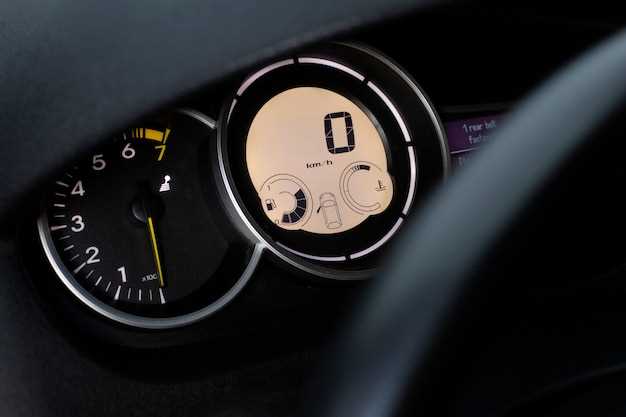How to Fix Audi Window Regulator Issues

Having troubles with your Audi’s window regulator can be frustrating and inconvenient. A faulty window regulator not only disrupts your vehicle’s functionality but also compromises your comfort and safety while driving. Understanding the common window regulator problems specific to Audi vehicles can empower you to tackle these issues head-on.
This article provides a comprehensive guide on how to repair your Audi’s window regulator step by step. From identifying the symptoms of a malfunctioning window system to the required tools and techniques for a successful fix, you will find everything you need to restore the functionality of your vehicle’s windows. Whether you’re an experienced DIY enthusiast or a first-time car owner, this guide will assist you in navigating through the repair process with ease.
By following our detailed instructions, you will not only save money on expensive repairs but also gain valuable insight into the inner workings of your car’s window system. Let’s dive into the world of Audi window regulators and learn how to bring those windows back to working order.
Identifying Symptoms of a Faulty Window Regulator

Recognizing the symptoms of a faulty window regulator is crucial for timely repair. One of the most common indicators is the window’s inability to open or close smoothly. If you experience resistance or hear unusual noises when operating the window, it’s a clear sign that the regulator may be failing.
Another symptom to watch for is a window that becomes stuck in one position. If the glass does not move at all or only moves partway, the regulator could be damaged or jammed. Additionally, if the window moves at an inconsistent speed or stops mid-operation, this uneven performance may indicate internal issues within the regulator mechanism.
In some cases, the presence of rattling or grinding noises when activating the window is a signal that the components are worn out or misaligned. Excessive vibration during operation can also point to a malfunctioning window regulator. If the window glass appears loose or does not sit properly within the frame, this could suggest that the regulator is not holding it securely.
Lastly, intermittent operation, where the window occasionally works and then fails, can be another important symptom. This inconsistent behavior may indicate electrical problems or a failing regulator that needs to be repaired or replaced. Prompt identification of these symptoms will help ensure effective repair and restore the functionality of your Audi’s windows.
Gathering Necessary Tools for Window Repair
Before starting the repair of your Audi’s window regulator, it is essential to gather the appropriate tools. Having the right equipment will not only streamline the process but also ensure that the repair is done correctly and efficiently.
First, you will need a set of basic hand tools, including a Phillips and flathead screwdriver. These will be necessary for removing screws and panels surrounding the window mechanism. A pair of pliers is also useful for gripping and bending any wires that may need adjustments during the repair process.
A torque wrench is recommended to ensure that all screws are tightened to the manufacturer’s specifications once the repair is completed. Additionally, a socket set will help in loosening and tightening bolts that can be present on the window regulator assembly.
It’s also advisable to have a trim removal tool. This specialized tool helps avoid damage to the interior trim while accessing the components related to the window regulator. If your Audi model has specific clips or fasteners, ensure you have the necessary clip removal tools as well.
Lastly, a good work light will illuminate the workspace, making it easier to see all components clearly. If you are dealing with electrical connections, having a multimeter can help troubleshoot any electrical issues related to the window regulator.
Collecting these tools in advance will facilitate a smoother repair process, minimizing time spent searching for equipment and maximizing efficiency in fixing your Audi’s window regulator.
Removing the Door Panel Safely and Efficiently
Removing the door panel is a crucial step in repairing the window regulator in your Audi. To begin, ensure you have the necessary tools, including a screwdriver set, a trim removal tool, and safety gloves.
Step 1: Start by disconnecting the vehicle battery to prevent any electrical shocks while working on the door panel. This is essential, especially if the window regulator is powered.
Step 2: Locate all screws and fasteners that secure the door panel. These are usually found at the bottom, sides, and behind the door handle. Remove these screws carefully using the appropriate screwdriver.
Step 3: Use a trim removal tool to gently pry off the door panel. Start at the bottom and work your way up, applying even pressure to avoid damaging the clips. Be cautious around the edges, as the panel can easily crack.
Step 4: Once the panel is loose, carefully lift it upwards to disengage it from the locking tabs at the top. Keep an eye on any electrical connectors for power windows or door locks, as they will need to be disconnected before fully removing the panel.
Step 5: With the door panel removed, you now have easy access to the window regulator. Inspect it for any signs of damage or wear that may require repair or replacement.
By following these steps, you ensure a safe and efficient removal of the door panel, setting the stage for a successful window regulator repair.
Inspecting the Window Regulator Mechanism

Inspecting the window regulator mechanism is a crucial step in diagnosing window issues in your Audi. The window regulator is responsible for raising and lowering the window. If you encounter problems with your window, follow these guidelines to inspect the mechanism effectively.
- Prepare the Workspace:
- Park the vehicle on a flat surface and turn off the engine.
- Gather necessary tools: screwdrivers, a multimeter, and a flashlight.
- Wear safety gloves to protect your hands.
- Access the Regulator:
- Remove the door panel carefully using a suitable screwdriver.
- Disconnect any electrical connectors that obstruct access to the window regulator.
- Ensure the window is in the closed position for easier inspection.
- Examine the Components:
- Check the entire regulator assembly for any visible signs of damage such as cracks or bends.
- Inspect the cables and pulleys for wear or fraying, which could prevent smooth operation.
- Look for any obstructions in the pathway of the window that might hinder movement.
- Test the Mechanism:
- Reconnect the electrical connectors temporarily to test if the motor operates when the window switch is activated.
- Listen for unusual noises that could indicate a malfunctioning motor or other internal issues.
- If the motor is silent, use a multimeter to check for power at the connector.
- Evaluate the Findings:
- If movement is jerky or the window does not respond, consider any misalignments or obstructions.
- Identify whether the issue might require specific repairs, such as replacing the regulator motor, cables, or the entire assembly.
- Document your observations to assist with further repairs or consultations.
By systematically inspecting the window regulator mechanism, you can determine the cause of the issue and decide whether it can be repaired or requires replacement. Always consult your vehicle’s manual for specific instructions related to your Audi model.
Replacing the Window Regulator: A How-To Guide
Replacing a window regulator in your Audi can seem daunting, but with the right tools and a systematic approach, you can repair it effectively. Follow these steps to ensure a smooth replacement process.
Begin by gathering necessary tools: a flathead screwdriver, a Phillips screwdriver, a socket set, a trim removal tool, and the new window regulator specific to your Audi model. Make sure to disconnect the car battery to avoid any electrical issues during the repair.
Next, remove the door panel. Start by locating and removing screws, typically found near the handle and at the bottom of the door panel. Use the trim removal tool to gently pry off the panel, carefully detaching clips while ensuring not to damage them.
Once the door panel is off, you’ll have access to the window regulator. Identify the regulator and the motor connected to it. Disconnect the motor’s electrical connector and remove any screws or bolts securing the regulator in place.
Now, carefully lift the window glass if it’s still in the door. You may need to support it from the bottom with a piece of tape or a helper. Slide out the old window regulator, making sure not to harm the glass or any other components.
Install the new window regulator by reversing the removal process. Secure it in place with screws and reconnect the motor’s electrical connector. Before reattaching the door panel, test the window operation to ensure everything is functioning correctly.
Finally, reattach the door panel carefully, ensuring all clips are secured and screws are tightened. Reconnect the battery, and give the window a final test. With the new regulator installed, your window should operate smoothly, resolving the initial problems.
Reassembling the Door and Testing Window Functionality
After successfully repairing the window regulator, it is time to reassemble the door. Begin by carefully aligning the door panel with the door frame, ensuring that all clips and fasteners are in place. Secure the panel using the manufacturer’s screws or clips, applying even pressure to avoid cracking any plastic components.
Next, reconnect any electrical connectors that were detached during the disassembly process. This is crucial for the window functionality, as these connections power the window motor. Double-check all connections to ensure they are firm and secure.
Once the door panel is properly attached, reinsert any covers or trim pieces that were removed. This may include handles, armrests, or decorative elements that enhance the overall appearance of the door.
Before fully closing the door, it is imperative to test the window functionality. Activate the window switch to ensure that the window moves smoothly up and down without any obstructions. Listen for any unusual noises, which could indicate misalignment or a problem with the new regulator installation.
If the window operates correctly, continue to close the door. However, if there are issues, it may be necessary to reopen the door to check the regulator installation and electrical connections. Identifying these problems early can prevent further repairs down the line.
Ultimately, ensuring proper reassembly and thorough testing will ensure the durability of the repair and the reliable functionality of the window for years to come.




